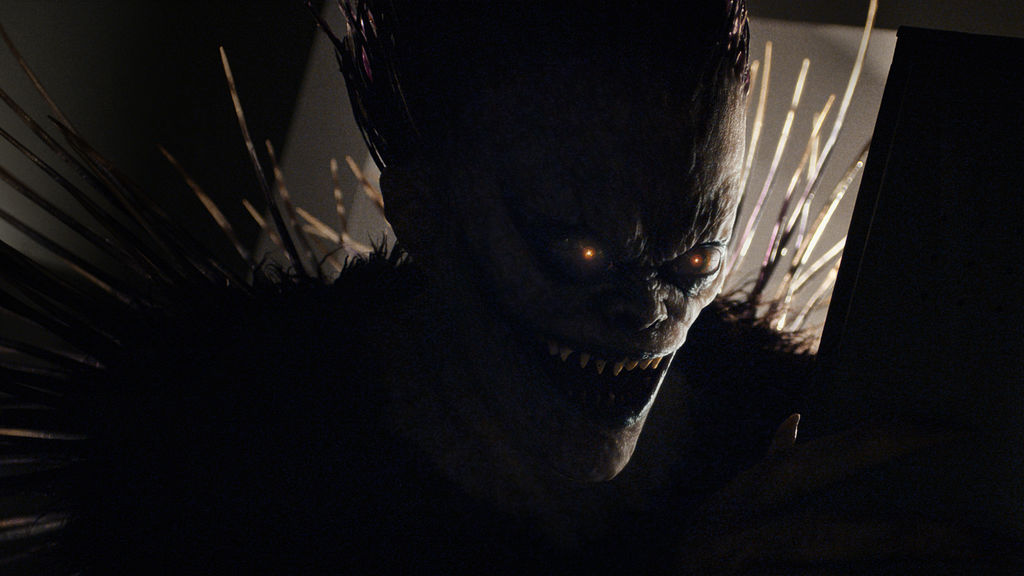Netflix’s ‘Death Note’ has nearly fatal flaws
The Death Note movie recently debuted on Netflix, much to the delight of fans of the book franchise. I was a bit skeptical, having been a huge fan of the books back in grade four.
Before it was released on the major streaming network, there were reports from Edward Zo all the way back in October of 2015 that the movie characters were being whitewashed. Zo, an Asian man, was denied the opportunity as an actor to play the role of Light Yagami, an Asian character from the books, because he was Asian. Upon reading the movie description, I discovered that the writers of the movie changed the surname of the main character from “Yagami” to “Turner.” Changing the setting from Japan to the Northwest coast of America and changing the surname of the main character has little to no effect on the plot, but it’s still irking to fans of the source material.
According to Zo, an up and coming actor in Hollywood, there are very few roles for Asian-Americans, let alone lead roles. It’s very much like when Scarlett Johannson played the lead role in Ghost in the Shell, despite the fact that Major Motoko Kusanagi was originally Asian. The characters of Watari (Paul Nakauchi) and L (Lakeith Stanfield) were played by actors of color, but most likely to provide an excuse that the movie is “ethnically diverse.” The juxtaposition between Light and L is uncomfortable, showing that Light is the “clear-headed” one and L is the “unstable child.” L is made out to be the antagonist in the film, when in the books L and Light both stand in the moral grey area and it’s up to the reader to choose who to root for.
The romantic relationship between Light and Mia ranges between being vexatious at times to outright abusive. The affair between Harley Quinn and the Joker, albeit bad, wasn’t quite this detestable. Mia became so power hungry at one point she put Light’s name in the Death Note and blackmailed him into consigning the book over to her. Then, later on, Light writes her name in the tome and sacrifices her to save his own life. This bond between the two is the farthest thing from healthy.
From an artistic standpoint, the shot composition and lighting were very satisfying. At one point, Mia leans against a window, basking in the colorful glow of a nearby neon sign. It was an interesting decision for lighting, breaking from the overall dark tones and lighting. When the Ferris wheel collapsed on the pier, it looked very convincing. I doubt the movie budget was high enough to purchase a Ferris wheel just to wreck it. During the chase scene, the variation in lighting was refreshing, though it could have been cut shorter.
The plot was easy to follow throughout the movie, however it got repetitive at times. Compared to another Netflix original, Stranger Things, there are fewer subtleties and more things are explained. Personally, I don’t really enjoy this trope in movies, but if it made the plot and actions more concise to anyone, more power to them. The one thing that wasn’t really explained or shown through anything was the transition of Light and Mia’s relationship from healthful to corrupt. Mia and Light’s relationship started quickly with little exposition, which is very unlikely to happen in real life. This may have been a parallel to William Shakespeare’s Romeo and Juliet, but to me it seems like a poor writing decision.
The opening shot for the movie is obsolete. Opening on a joint football and cheer practice is out of the ordinary when the movie is about a non-athletic type. Light was sitting on the bench near the practice, why didn’t it open with a shot from a drone descending upon him like the Death Note? It would give a lot more symbolism and help your brain understand that Light is the main character and the “chosen one” right when it opens. If it opened on Light doing homework for other students, it would make more sense that he would get detention for that. The opening scene of a movie is usually the most important and remembered part of a movie. If you look at Miss Sunshine or Silence of the Lambs, you can see oodles of symbolism shining through if you look hard enough. The expository shot from this movie looks more like a deleted scene from Riverdale that was recycled.
The dialogue had an unnatural flow to it and could have had less edge. In the books, Light had a more subtle vibe, while in the movie he gave off the tone of “I have the power of God and anime on my side!” Hot Topic already carries Death Note merchandise, but some of the phrases the actors in the movie spitted out seemed like attempts for the adolescent-oriented company to produce shirts with quotes on them. If you turn off the sound on the movie, you can pretend that it’s a silent film and probably enjoy it more.
Death Note barely scraped by with a Rotten Tomatoes rating of 42%, which barely ranks it above Shrek the Third and The Hitman’s Bodyguard. I’m not here to trash this movie for you. If you enjoyed it, great! Everyone has opinions, this article is just a showcase of mine. Whether you think the Death Note movie is a movie parallel of 13 Reasons Why or the pinnacle of human creation, that’s all fine and good. If you want to watch something when you’re tired or bored, I recommend this movie. Honestly, I give it a solid two stars out of five.

